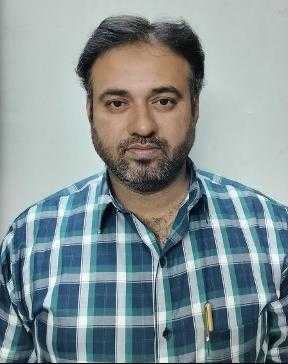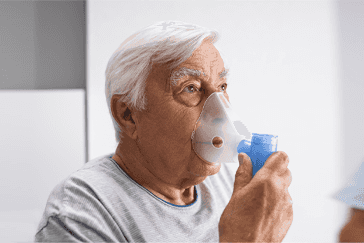
Expert Physiotherapy at Home
Certified physiotherapists visit you at home to provide focused, one-on-one care tailored to your needs. With no travel or waiting rooms, recovery happens in a setting that is comfortable, familiar, and built around your convenience.
Personalised Recovery Programmes
Every treatment plan is designed to suit your condition, goals, and pace. Our physiotherapists follow structured, evolving protocols to ensure consistent progress, with each session aligned to deliver meaningful results.
Trusted Physiotherapists. Real Results.
Our team comprises experienced, background-verified physiotherapists trusted by thousands of families. With a strong focus on safety, reliability, and clinical outcomes, we make recovery at home both effective and reassuring
Patient Testimonials
Portea Physiotherapists for Home Visits
Meet some of our experienced and dedicated healthcare professionals

Dr. Lokesh G
Physiotherapist
Specializations
Experienced in Neurological rehabilitation, Orthopaedic physiotherapy, and Paediatric care
Delivers structured, high-impact treatment plans across neuro, ortho, and paediatrics—ensuring safety, comfort, and measurable recovery at every stage.

Dr. Mohammed Sarwar
Physiotherapist
Specializations
Experienced in Neurological rehabilitation, Adult physiotherapy, and Paediatric care
Combines deep clinical expertise with a compassionate approach, supporting both adults and children through neuro and physical rehabilitation that promotes long-term independence and recovery.

Dr. Nelapati Divya
Physiotherapist
Specializations
Skilled in Orthopaedic rehabilitation, Manual therapy techniques, and Paediatric physiotherapy
Brings a personalised, hands-on approach to healing—combining structural expertise with paediatric sensitivity to restore movement, relieve pain, and improve everyday function.

Dr. Naveen V
Physiotherapist
Specializations
Trained in Pain management, Cardiac and Orthopaedic rehabilitation, Neurological care, and Neural tissue mobilisation
Brings clinical precision and empathy together—designing science-backed recovery protocols for pain relief, nerve mobilisation, and cardio-neuro-ortho rehabilitation across all age groups

Dr. Miloni Savla
Physiotherapist
Specializations
Holds an MPT in Orthopaedics with a focus on Musculoskeletal rehabilitation and strength recovery
Delivers focused, movement-oriented therapy grounded in orthopaedic science—helping patients rebuild strength, restore function, and return to daily life with confidence
Other Cities
Physiotherapy Treatments

what is chest physiotherapy?
Content is medically reviewed by:
Shruti Bangera, Masters In Neurological Physiotherapy, Senior Physiotherapist & SME, Portea
Chest physical therapy (CPT) is a technique for airway clearance in order to drain the lungs. The process generally includes percussion (clapping), vibration, breathing, and coughing or huffing.
why is chest physiotherapy done?
The common uses of Chest physiotherapy or reasons of doing it include:
- To help in removal of retained or profuse secretions in airway
- To improve lung efficiency and prevent it from collapsing
- To decrease the load of breathing and make easier
- To make the ventilation-perfusion ratio optimum
These Might be of Interest
who needs chest physiotherapy?
Chest physiotherapy is given to patients after doctor’s recommendations. Patients could be suffering from conditions like:
- Bronchiectasis
- Cystic fibrosis
- COPD (chronic obstructive pulmonary disease)
- Neuromuscular disorders
- Pneumonias in lung regions
process of chest physiotherapy
While undergoing chest physical therapy, the patient gets in various positions to use gravity to drain mucus from the five lobes of the lungs. Every position of chest physiotherapy exercise is such that the larger part of the lung is facing downwards. When the process is combined with percussion, it is known as postural drainage and percussion (PD&P). A caregiver can be helpful in such case and can clap/vibrate the person’s chest to dislodge and send the mucus to the larger airways from where it can be coughed or taken out of the body.
Chest physiotherapy in child suffering cystic fibrosis can be done by parents if they are well trained. Although it is recommended to get it done by physiotherapists, respiratory therapists, care givers or nurses during home visits or in the hospital.
Other methods that could help clear airways include using specific controlled patterns of breathing and using low-frequency airway oscillation devices for mobilizing sputum. For all types of chest therapy, please ensure that it is done only after consultation from a doctor or certified practitioner.
In addition to CPT, Doctors could recommend one or more types of chest therapy to manage the condition. These treatments can vary depending on the disease type, the severity of the disease, medical history, patient’s age, and other factors. Additional Chest PT treatments may include:
- Expectorant medicines to help in loosening lung secretions and make them more easy to cough up
- Recommendation for Nebulizer to help moisten the secretions and open the airways
- Suctioning to take out secretions that you are not able to cough out
how long does cpt take?
In most cases, each treatment session can last between 20 to 40 minutes. It is advisable to do CPT before meals or two hours after eating, so that there are low chances of vomiting. Early mornings are usually recommended. The physiotherapist could increase the length of each CPT session and its frequency in a day if the person is feeling more congested or getting sick. The therapist can recommend what all positions are needed, how frequently and how long CPT should be done.
making cpt comfortable and enjoyable
- Before the session caregiver should talk to the patient and make him/her comfortable
- Before starting, the patient should remove tight clothes, jewelry etc. Light and soft clothing, such as a cotton T-shirt, may be worn
- The caregiver should also remove rings and any bulky body accessory, such as watches or bracelets
- It is not recommended to do CPT on bare skin
- Place few tissues or any tumbler nearby to cough out the mucus
- The bed or place where the patient lies on should be at a convenient height for the caregiver
- You can use pillows or sofa cushions for support or cribs with adjustable mattress heights
- For pediatric chest physiotherapy, infants should be placed comfortably in caregiver’s lap with or without pillows
possible side effects of cpt
Side effects of CPT are rare but in few cases the patient could feel the following:
- Trouble in breathing
- Unrelieved coughing
- Pain
- Dizziness
- Upset stomach
- Nausea
- Gastroesophageal reflux
Call your healthcare provider for help if side effects are severe.
why do you need a physiotherapist?
Chest therapy should ideally be performed under the supervision of a physiotherapist; however, it is also possible for someone from your family to get trained. The physiotherapist can teach you to perform some basic therapies on your own. For conditions when complex movements and procedures like nebulizer and drug administration are required, hire a certified professional.
Physiotherapists are better trained, experienced and effective in giving a holistic chest physiotherapy. They ensure a seamless experience and help in better recovery.
how portea helps
- Portea physiotherapists provide services to patients in the comfort of their homes
- They are experienced, trained and certified
- They assess, diagnose, and prepare a treatment plan depending on the specific needs of patients
- They are empathetic towards special needs of patients
- You can book the time slot of your session as per your convenience
- Our trained physiotherapists monitor medical reports and patient progress from advanced devices to give you better services
Also Checkout:
Doctor Consultation
Nursing
Physiotherapy
Trained Attendant
Elder Care
Mother & Baby Care
Lab Tests
Medical Equipment
Speciality Pharma
Critical Care








